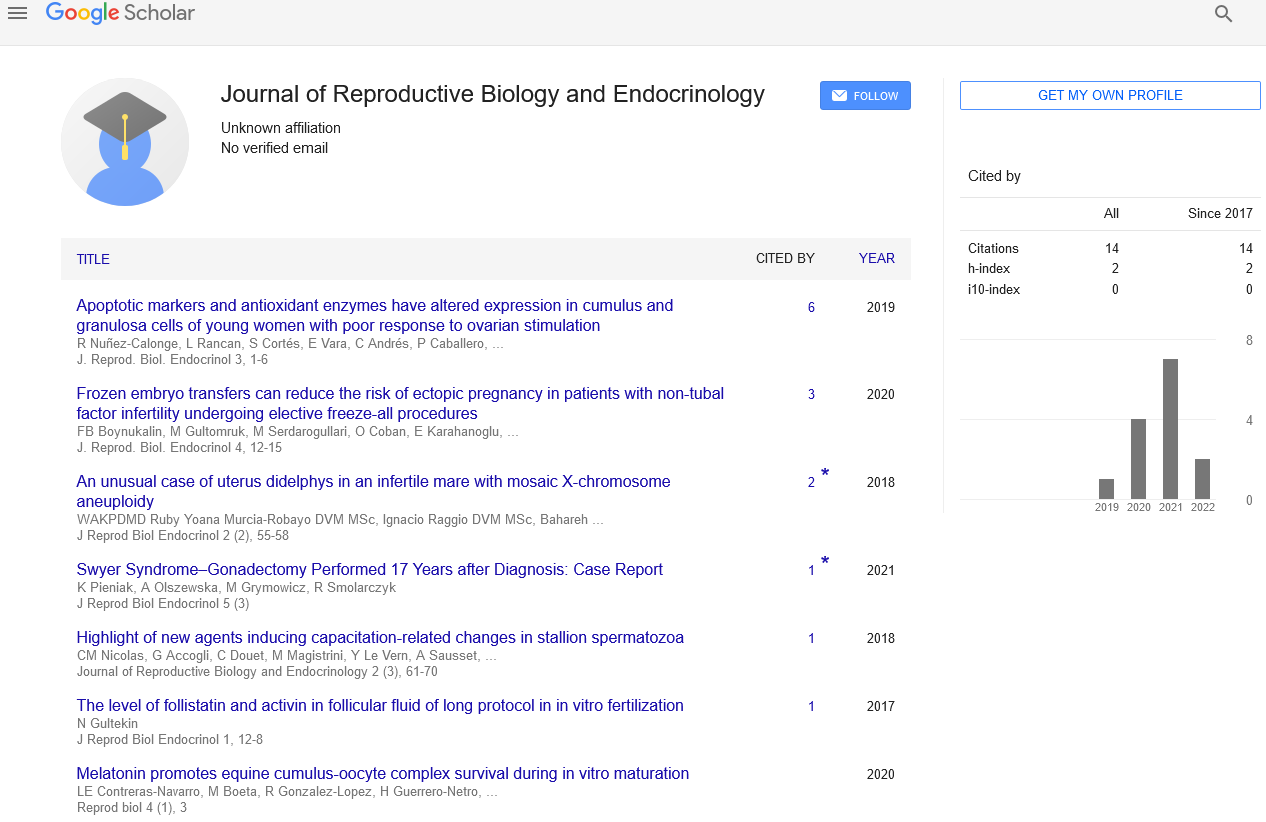Pre-conception care knowledge among women of reproductive age
Received: 19-Dec-2022, Manuscript No. PULJRBE-22-5924; Editor assigned: 22-Dec-2022, Pre QC No. PULJRBE-22-5924 (PQ); Reviewed: 06-Jan-2023 QC No. PULJRBE-22-5924; Revised: 06-Mar-2023, Manuscript No. PULJRBE-22-5924 (R); Published: 13-Mar-2023, DOI: 10.37532/PULJRBE.2023.7(1).1
Citation: Wilson J. Pre-conception care knowledge among women of reproductive age. J Reprod Biol Endocrinol 2023;7(1):1
This open-access article is distributed under the terms of the Creative Commons Attribution Non-Commercial License (CC BY-NC) (http://creativecommons.org/licenses/by-nc/4.0/), which permits reuse, distribution and reproduction of the article, provided that the original work is properly cited and the reuse is restricted to noncommercial purposes. For commercial reuse, contact reprints@pulsus.com
Abstract
Although self-reported alcohol use might be deceiving and hinder effective treatment, foetal alcohol problems are preventable. This study examined the association between blood Phosphatidylethanol (PEth) and alcohol usage in a sample of women of reproductive age as a different approach to measuring alcohol use. Medical care is the primary line of treatment for women who have abnormal uterine bleeding after a full history, physical examination, and any necessary imaging tests have been completed and all important structural causes have been ruled out. The patient'streatment plan will be customised based on the severity of the bleeding, their medical history, the evaluation of risk factors, and the establishment of a diagnosis. Given the right clinical circumstances, there are several effective treatments for acute abnormal uterine bleeding in women with normal uteruses, including parenteral estrogen, a multidose combined oral contraceptive regimen, a multidose progestin only regimen, and tranexamic acid. A levonorgestrel releasing intrauterine system, combined oral contraceptives, continuous oral progestins, and tranexamic acid are all highly effective treatments for heavy menstrual bleeding. To lessen menstrual bleeding, nonsteroidal anti- inflammatory medicines can be used with hormonaltreatments and tranexamic acid
Keywords
Uterine bleeding; Menstrual bleeding; Gynecology and Obstetrics medical; Premenopausal women; Tranexamic acid
Introduction
Irregular bleeding in the uterus premenopausal women with significant menstrual bleeding is classified by the international federation of gynecology and obstetrics as medical patients. A range of urogenital illnesses, including bacterial vaginosis, yeast infections, sexually transmitted diseases, urinary tract infections, and HIV infection, appear to be prevented in part by the human vaginal microbiota. According to conventional belief, this is caused by lactic acid producing bacteria, primarily Lactobacillus sp., which is frequently found in the vagina. These species are believed to perform important protective functions by reducing the pH of the surrounding environment through the creation of lactic acid, by creating a variety of bacteriostatic and bacteriocidal chemicals, or through competitive exclusion.
Description
Alcohol consumption often begins in late adolescence, and for both men and women, problematic use is most common in early adulthood. More than 58% of those who first used alcohol in 2012 were under the age of 18, and more than 80% of those who did so were under the age of 21, with similar percentages of men and women initiating use. In addition to the rise in total alcohol usage among young women, there has also been a rise in binge drinking; 33.2% of women between the ages of 18 and 25 reported binges drinking the year before. At the moment, one in eight American women (almost 14 million) binges three times per month on an average of six drinks. The center issued an alarm due to the rise in young women's binge drinking
Members of the vaginal bacterial community's taxonomic classifications and the related metadata for each subject are displayed in. Each community's level of coverage allowed for the detection of taxa that make up less than 0.1% of the community.
Taxa that are present below this threshold are frequently referred to as "rare" or low abundance taxa, however this only applies in the context of sampling depth. High quantities (105 cells/mL) of "rare" members are present in the community if a vaginal bacterial community has 108 cells per millilitre of vaginal discharge, yet phylotypes present at densities of 105 cells per millilitre would go unidentified. These "rare" taxa might have a significant impact on a community's ecology, whereas undetected individuals might serve as a "seed bank" for new species.
Conclusions
Sequences were trimmed by removing the barcode and primer sequences after being binned by samples using the sample specific barcode sequences. The caliber of sequence reads was evaluated using the criteria previously mentioned a sequence read needed to satisfy four requirements in order to pass:
• It contained a perfect match to the 16S rRNA gene primer and sequence tag (barcode).
• It was at least 200 bp in length.
• It had no more than two undetermined bases.
• It had at least 60% similarity to a 16S rRNA gene sequence that had already been determined. 4.8% of the sequence reads, on average, failed this quality control stage.





